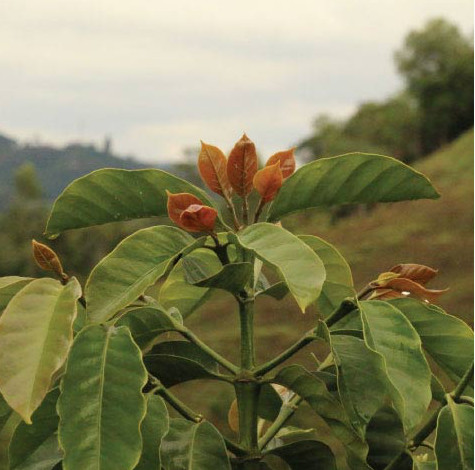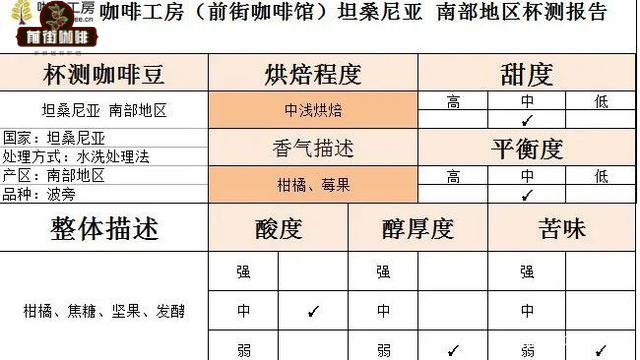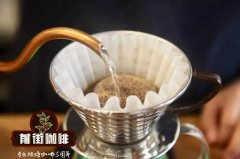What are the coffee producing areas in Tanzania? Flavor characteristics and story introduction of coffee beans in Tanzania

Professional coffee knowledge exchange more coffee bean information please follow the coffee workshop (Wechat official account cafe_style)
Africa is a famous coffee producer, Ethiopia and Kenya have been introduced many times, Qianjie today introduced an unknown boutique coffee producing country-Tanzania. The country lies south of the equator in eastern Africa and borders Kenya and Uganda, the famous coffee producers, to the north, both of which are high producers of fine coffee in the world. Coupled with the fact that the country's topography is dominated by mountain grasslands and tropical mountain climate, and the climate is cool and dry, it seems to be blessed by God that Tanzanian coffee is not ordinary, but an extraordinary boutique coffee road. If that's not enough to surprise the front street. Tanzanian coffee has very distinctive characteristics: full-grained coffee, pure flavor, soft acidity, rich and refreshing taste, long-lasting aftertaste in the throat, fragrance overflowing, the characteristics are really difficult to express in words. You can only feel this natural delicacy through tasting.

There are few kinds of coffee in Tanzania, but the demand for coffee produced in Tanzania is also relatively high in the world coffee market, because many people like the flavor characteristics of Tanzanian coffee. What are the flavor characteristics of Tanzanian coffee? How about coffee in southern Tanzania? Let's learn about it with Qianjie.
Tanzania is located in the central and eastern part of Africa, Tanzania boutique coffee is a typical representative of washed coffee, bright and delicious acidity is one of its major characteristics. Tanzania's neighbor Kenya is a well-known producer of boutique coffee. Tanzania has a lot in common with Kenyan coffee because its geological conditions are very similar to Kenya's. Tanzania coffee beans are mainly grown in the north and south of its territory. the excellent altitude and climatic conditions make the quality of these coffees very potential. coffee in the south also has the traditional flavor characteristics of Tanzanian coffee beans.
Washing treatment method
The coffee beans in southern Tanzania from Qianjie Coffee are washed. Washing treatment steps: after fruit harvest, select the high-quality ripe fruit, peel, naturally ferment for 12-24 hours, clean, soak in water for 24 hours, clean and dry in the sun.

Variety
In 1898, bourbon coffee was introduced to the Kilimanjaro region of Tanzania by Catholic priests. Then the Kent species was introduced in 1920, and so far there are kent and bourbon species in Tanzania. The beans of Qianjie Coffee in the south are grown in bourbon. Bourbon coffee fruit is short and round, with high density of pulp and seeds. Bourbon coffee usually has high sweetness and bright acidity. The yield of this coffee is 20-30% higher than that of iron pickup, but it is still regarded as a low-yield bean seed and is also vulnerable to rust leaf disease.
Grading system
The grading system of coffee beans in Tanzania is the same as in Kenya, according to the size of beans, there are AA, AB, PB and so on.
Producing area
Tanzania Tansania
Population: 44929000
Tansania produces a reasonable number of Robbot beans, concentrated in the northwest and around Lake Victoria. The rest of the area uses the nature of high altitude to grow coffee beans.
Tanzania is a country with a rich coffee history and a vast coffee growing area. The main producing areas are Mount Kilimanjaro and Mount Meru. They are two volcanoes with very fertile soil. The coffee system and flavor are similar to those of Kenya. And coffee is the main cash crop in the country, 70% of which is Arabica beans, growing in northeastern Tanzania and 30% Robusta. Mainly in the northwest near Rwanda and Uganda, the Cagella Kagera producing area.
KILIMANJARO
This area is the oldest growing Arabica bean in Tanzania and, of course, there is plenty of time to build international visibility and reputation. With a long tradition of coffee production, good infrastructure and equipment have been established, but many existing coffee trees are old and their yields are low, and coffee beans are increasingly facing competition in production.
Altitude: 1050-2500m
Harvest: July-December
Varieties: Kent, Bourbon, Typica, Typica/Nyara
RUVUMA
This area, named after the Ruvuma River River, is located at the southernmost tip of Tansania. Coffee growing areas surround the Mbingo area, which is generally believed to have the potential to produce high-quality coffee beans, even though there was a lack of economic access in the past.
Altitude: 1200-1800m
Harvest: June-12
Variety: Kent, Bourbon, Bourbon derivatives such as N5 and N39
[Qianjie Coffee Baking Curve]

In order to highlight the coffee flavor of the southern region, Qianjie coffee roasters use medium and shallow roasting. Enter the bean temperature: 170 °C, turn yellow point: 6 °15150.8 °C, 1 explosion: 10 °03182.7 °C, 1 °50 seconds, 194 °C lower pot.
[coffee cup test report on Qianjie]

Dry aroma: berries, fermentation
Wet fragrance: berries, flowers
Cup test: citrus, caramel, nuts, fermented aroma

Qianjie Coffee Southern Tanzania
Producing area: southern region
Variety: bourbon
Treatment: washing
Grade: AA
Altitude: 1200-2100 m

[Qianjie coffee brewing parameters]
Filter cup: V60 water temperature: 91 °C ratio of water to powder: 1:15 Grinding degree: BG#5J
[Qianjie coffee brewing technique]
30 grams of steam for 30 seconds, after the end of steaming, circle injection of water to 125 grams, and so on after the water level dropped by half, continue to circle injection of 225 grams, the total extraction time is 2 minutes.
[front Street Coffee Flavor description] Flower, berry, citrus, nut.

For more knowledge of boutique coffee, please add private Wechat Qianjie Coffee WeChat account: kaixinguoguo0925
Important Notice :
前街咖啡 FrontStreet Coffee has moved to new addredd:
FrontStreet Coffee Address: 315,Donghua East Road,GuangZhou
Tel:020 38364473
- Prev

Ethiopia West Dharma Flower Queen
Huakui treatment plant is located in buku abel village at an altitude of 2200 meters. During the harvest season (December-January), its unique growing environment and natural climate created its unique flavor. The red fructose we picked should reach 30 or more before we start sun treatment. In the first two days of the sun, we must ensure the humidity of the red fruit, so that its fructose fully begins to ferment. At the same time, the high-altitude land
- Next

Introduction to the characteristics of Sidamo Coffee in Sidamo Coffee, Ethiopia
Professional coffee knowledge exchange more coffee bean information please follow the coffee workshop (Wechat official account cafe_style) Ethiopia is in the center of the Horn of Africa, is a landlocked country. The territory is mainly a mountainous plateau, with a large part of the Ethiopian plateau. The central and western regions are the main body of the plateau, accounting for 2. 3% of the whole territory. The East African Rift Valley runs through the whole territory, with an average elevation of nearly 3000 meters.
Related
- Detailed explanation of Jadeite planting Land in Panamanian Jadeite Manor introduction to the grading system of Jadeite competitive bidding, Red bid, Green bid and Rose Summer
- Story of Coffee planting in Brenka region of Costa Rica Stonehenge Manor anaerobic heavy honey treatment of flavor mouth
- What's on the barrel of Blue Mountain Coffee beans?
- Can American coffee also pull flowers? How to use hot American style to pull out a good-looking pattern?
- Can you make a cold extract with coffee beans? What is the right proportion for cold-extracted coffee formula?
- Indonesian PWN Gold Mandrine Coffee Origin Features Flavor How to Chong? Mandolin coffee is American.
- A brief introduction to the flavor characteristics of Brazilian yellow bourbon coffee beans
- What is the effect of different water quality on the flavor of cold-extracted coffee? What kind of water is best for brewing coffee?
- Why do you think of Rose Summer whenever you mention Panamanian coffee?
- Introduction to the characteristics of authentic blue mountain coffee bean producing areas? What is the CIB Coffee Authority in Jamaica?

